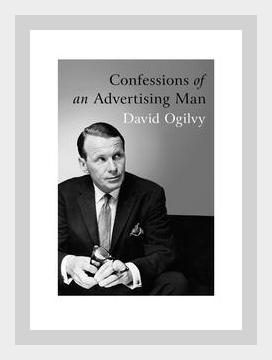Marketing and SalesAdvertising
Introduction
“Confessions of an Advertising Man” by David Ogilvy is a seminal work published in 1963 that delves into the principles of effective advertising. A crucial read for anyone in the field, Ogilvy’s book outlines actionable tactics, strategic thinking, and ethical considerations based on his extensive experience in the advertising industry. The book is divided into several sections, each tackling different aspects of advertising—from creating successful campaigns to managing an advertising agency.
1. The Creative Process
Major Points:
– Ogilvy emphasizes the importance of focusing on the “big idea” that captures the consumer’s attention.
– He stresses the use of research, testing, and learning from past experiences to develop successful advertising strategies.
Examples:
– The iconic Rolls-Royce campaign: Ogilvy created an ad for Rolls-Royce that highlighted a “noiseless” engine with the line, “At 60 miles an hour, the loudest noise in this new Rolls-Royce comes from the electric clock.” This ad was a result of thorough research and insight into the product.
Actions:
– Developing a Big Idea: Invest time in research before brainstorming creative concepts. Understand the unique selling points (USPs) of the product or service.
– Use of Data: Regularly run A/B tests on different ad versions to identify what resonates most with your audience.
2. Understanding the Audience
Major Points:
– Ogilvy advocates for deeply understanding the consumer’s perspective.
– He underscores the importance of extensive market research to tailor the message to the audience’s desires and needs.
Examples:
– Dove soap campaign: Ogilvy’s research revealed that women value beauty and femininity, which led to the creation of the successful Dove campaign with messages that focused on these attributes.
Actions:
– Consumer Interviews: Conduct surveys and focus groups to glean insights into consumer behavior and preferences.
– Customer Profiles: Create detailed customer profiles to fine-tune messaging that speaks directly to potential buyers.
3. Writing Advertisements
Major Points:
– Effective copywriting should be straightforward, clear, and impactful.
– Ogilvy highlights the necessity of strong headlines, compelling body copy, and a prominent call-to-action.
Examples:
– The famous “Hathaway Man” campaign: Ogilvy wrote compelling copy for Hathaway shirts that featured an aristocratic man with an eye patch, making the headline intriguing and the product memorable.
Actions:
– Headline Formula: Follow Ogilvy’s formula: promise a benefit, pique curiosity, and be specific.
– Copywriting Training: Regularly practice copywriting techniques and study successful ads to refine your craft.
4. Branding
Major Points:
– Consistency is key in building a powerful brand.
– Ogilvy explains how every detail, from the logo to the color scheme, should communicate the brand ethos.
Examples:
– The Schweppes campaign: Ogilvy maintained consistency in portraying Commander Whitehead as the “man from Schweppes,” establishing a memorable and strong brand identity.
Actions:
– Brand Guidelines: Create and adhere to comprehensive brand guidelines that cover visual elements and tone of voice.
– Regular Audits: Periodically review all marketing and communication materials to ensure brand consistency.
5. Handling Clients
Major Points:
– Effective client relationships are built on trust, transparency, and results.
– Ogilvy emphasizes the importance of under-promising and over-delivering.
Examples:
– Ogilvy & Mather’s long-term relationship with Shell Oil: This partnership flourished due to consistent, demonstrable results and clear communication.
Actions:
– Client Communication: Schedule regular updates and meetings to discuss campaign progress and adjust strategies based on feedback.
– Performance Metrics: Share concrete metrics and results to demonstrate the value being delivered regularly.
6. Advertising Techniques
Major Points:
– Ogilvy shares several practical advertising techniques, such as using testimonials, demonstrating the product, and emphasizing the quality.
Examples:
– Leveraging testimonials in Hathaway’s ad campaign bolstered credibility and aided customer trust.
Actions:
– Testimonials: Actively collect and use customer testimonials in your advertising materials.
– Product Demonstrations: Create video or visual content that demonstrates your product’s benefits in a convincing manner.
7. Ethics in Advertising
Major Points:
– Ogilvy champions ethical practices, urging advertisers to be truthful and to avoid misleading information.
– He advocates for respecting the intelligence of the consumer.
Examples:
– Ogilvy’s campaigns, such as Shell’s, refrained from exaggerated claims and instead focused on delivering value and honest messaging.
Actions:
– Review Campaigns for Accuracy: Ensure all advertising claims can be substantiated by verifiable data.
– Ethical Standards: Develop a code of ethics for your advertising practice to guide all marketing activities.
8. Managing an Advertising Agency
Major Points:
– Leadership in an advertising agency requires a blend of creative vision and business acumen.
– Ogilvy shares insights on talent management, particularly the importance of hiring individuals who are more talented than oneself.
Examples:
– Hiring the best: Ogilvy was known for recruiting top talent, which played a key role in the success of Ogilvy & Mather.
Actions:
– Talent Acquisition: Implement rigorous screening processes to hire top-tier talent with diverse skillsets.
– Employee Development: Invest in continuous learning and development opportunities for your team to foster innovation and growth.
9. Building Campaigns
Major Points:
– Simplifying the message is critical to making a big impact.
– Multi-channel consistency can amplify the message and reach a broader audience more effectively.
Examples:
– The Maxwell House “Good to the last drop” campaign successfully used a simple, memorable slogan across all advertising platforms.
Actions:
– Cross-platform Strategy: Develop a multi-channel marketing strategy that maintains a consistent message across all platforms.
– Message Simplification: Distill complex messages into simple, memorable slogans that are easy to communicate and understand.
Conclusion
David Ogilvy’s “Confessions of an Advertising Man” is a treasure trove of advertising wisdom. His principles of focusing on the big idea, understanding the audience, ethical practices, and strong client relationships are as relevant today as they were in 1963. By implementing the actionable steps outlined in each major point, modern advertisers can harness Ogilvy’s timeless insights to create compelling, effective campaigns that stand the test of time.
